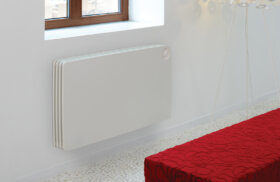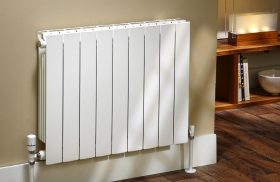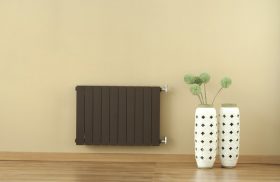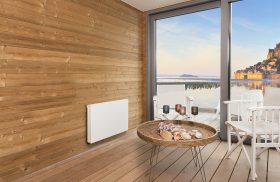Now that the winter chill is making its presence felt, and the clocks going back mean we want to spend longer wrapped up indoors, you must make sure your designer radiators are working at maximum efficiency.
Bleeding your radiators
Working out whether or not your radiators need bleeding is very simple. When the heating is on, feel each radiator to make sure that it’s warm at the top as well as at the bottom. If only part of the radiator is warm, it’s an indication that air has become trapped and you will therefore need to ‘bleed’ it in order to get the air out of the system.
Before you start bleeding the radiator, turn the heating off, and make sure you have an old cloth to hand. Then use your radiator key to loosen the bleed valve which you’ll find at one end of the top of the radiator. Do not take the screw out – all you need to do is turn the valve a little way until you hear the hiss of air escaping. When little bubbles of water start appearing around the bleed screw, tighten the screw again to stop any more water escaping.
When you turn the heating back on, the radiator should be warm all over.
If your radiators are still cold after you’ve bled them, then you’ll probably need to get a professional in to take a look.
Boiler service
If you don’t already get your boiler serviced annually, it’s a good idea to start. A service will ensure that your heating system is working as efficiently as possible, and will hopefully pick up anything now that might cause problems when the weather gets really cold later in the winter. Make sure you chose an engineer who is Gas Safe registered. If you are unsure what a boiler service involves, the consumer association Which? has published a handy checklist of what your engineer needs to look at.
If you would like further information about designer radiators which will keep your house toasty at the same time as enhancing the look of your home, visit one of our radiator showrooms to see them for yourself.





